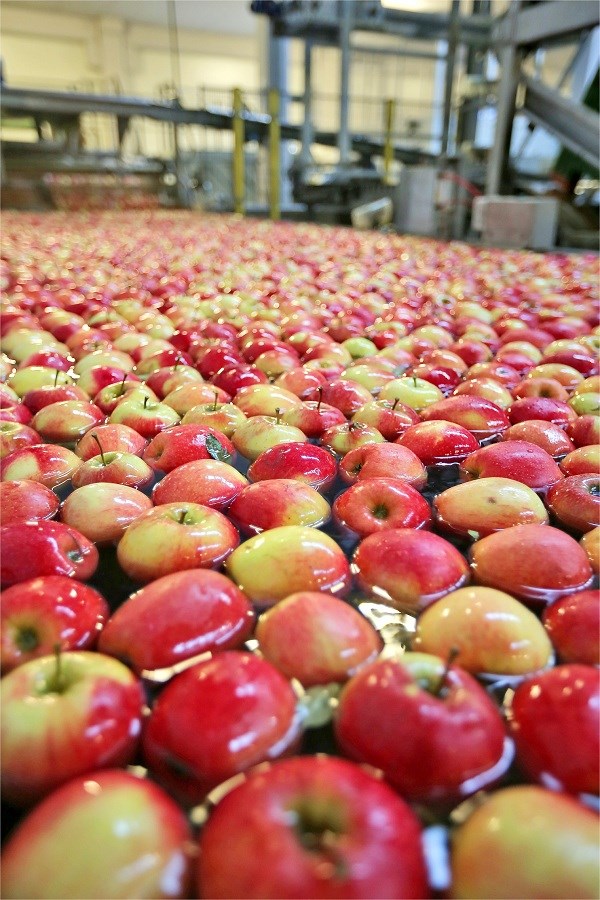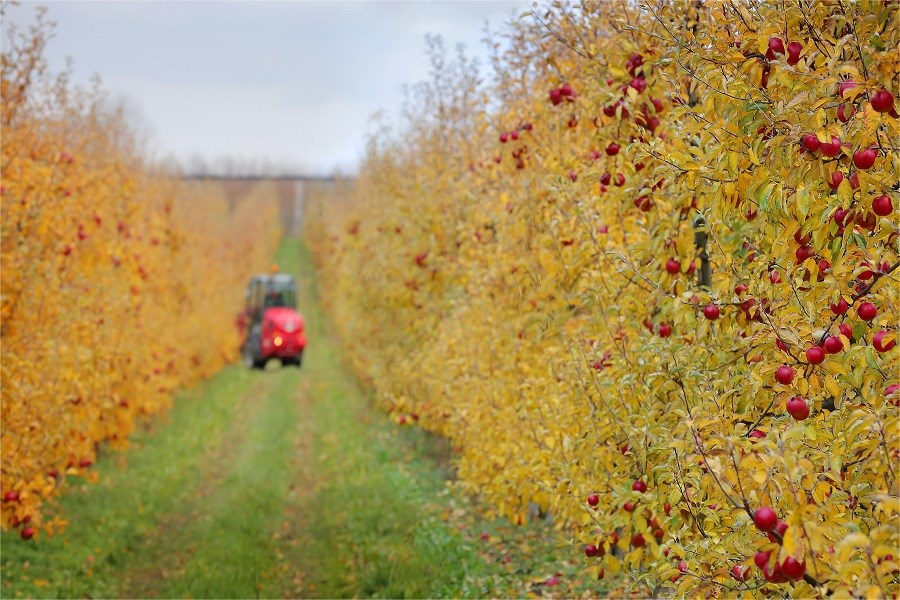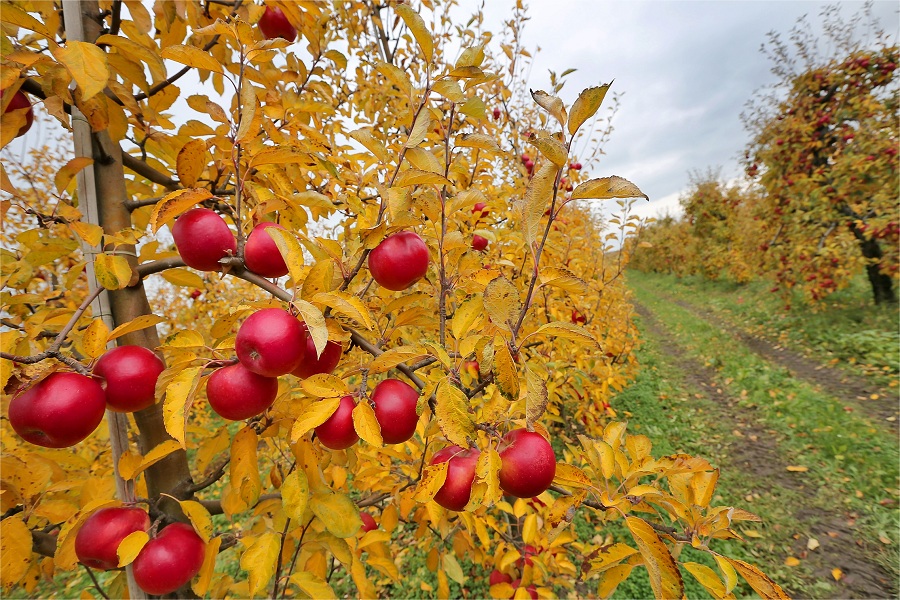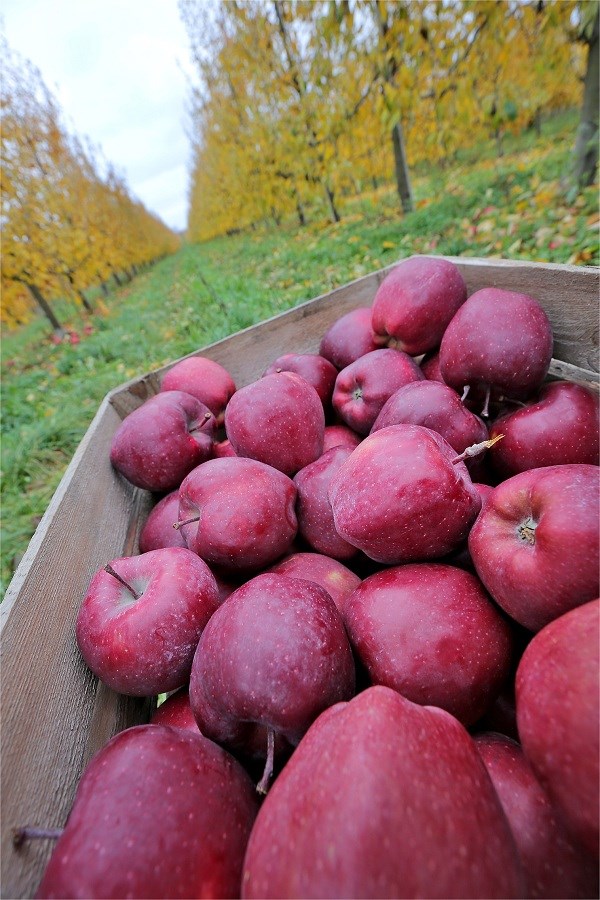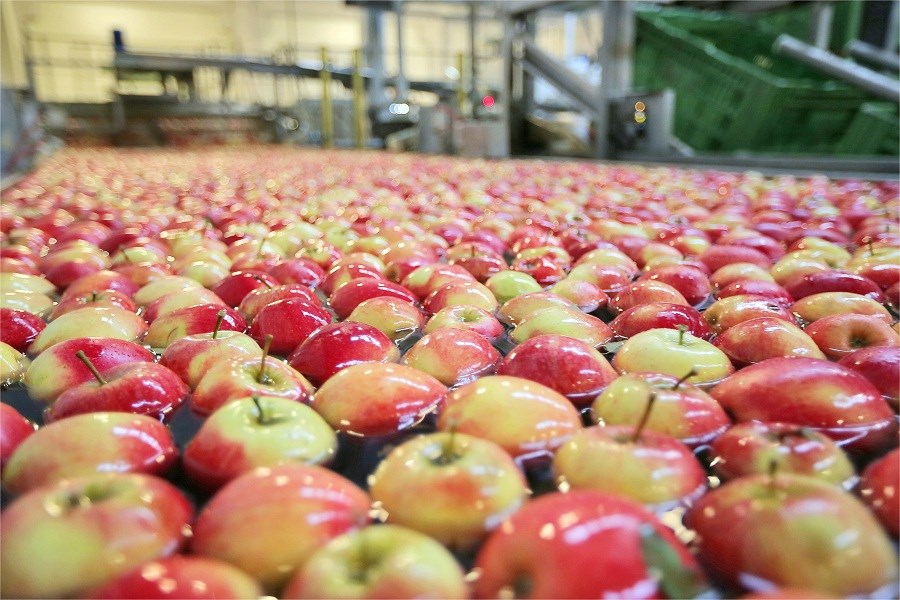Their blush is much more powerful than on other apples, which only adds to their beauty. They are also slightly higher in acidity, which makes them a perfect choice for brewing cider. Apples from Grójec owe their characteristic features such as colour, size and unique flesh to the local climate and soil. Coming in over 40 different varieties and grown in a strictly delineated areas of Mazowsze and Łódź Provinces, Grójec apples are a unique product that is both deeply steeped in local tradition and constantly improving in quality. The Association’s Mission Statement? To maintain a leading position in the market of agricultural products and to satisfy both the existing and prospective Customers.
For several years now, Poland has been the largest apple producer in the European Union, and third worldwide, behind China and the United States. Grójec apples’ contribution to this success is a significant one: local apples were awarded three certificates from the European System of the Protection of Registration of Regional Products: protected designation of origin (PDO), protected geographical indication (PGI) and traditional specialities guaranteed (TSG). They are known for an extraordinarily large blush, which is 5% larger than the average, and higher acidity, which is also 5% higher than the average. Grójec apples are both tasty and suitable for processing due to a large number of varieties grown on a unique terroir. Local orchards date back to the reign of Queen Bona, who was known for her passion for gardening and pomiculture.
The Queen was granted a large area of land in the Grójec District. which she took care of by bestowing a large number of privileges on garden owners. Pomiculture was also legally established by an act issued by King Sigismundus II Augustus. This gave rise to the rapid development of pomiculture in the area, and apple orchards in particular. Numerous historic records include a variety of mentions about fruit orchards cultivated by both the gentry and the peasants. The clergy, who vastly contributed to fruit culture promotion, feature prominently in the history of Grójec orchard keeping in the 19th century. First commercial orchards started to crop up in the area at the beginning of the 20th century, whereas the first fruit storage facility was built in 1918. Similarly, first counsellors soon appeared in the industry.
The extremely dynamic development of Grójec pomiculture falls on the perioed after World War II, which is marked by the setting up of the Experimental Department of the Research Institute of Pomology and Floriculture. The institute has developed into a role model for local orchard keepers to spread new fruit tree growing methods and pomology innovations. This in turn contributes to an ever growing capacity of the local orchards.
Grójec apples are “seen to” by the Stowarzyszenie Sady Grójeckie [Apple Orchard Keepers’ Association], which gathers both individual members and companies. Visibly thriving, the Association provides funding and organises promotional initiatives and workshops, conferences and competitions, cultural events, exhibitions and shows to showcase both Grójec produce and the region’s culture and identity. The Association also develops and implements high manufacturing and distribution standards, collaborates and exchanges know-how with public institutions and non-governmental organisations both home and abroad. The Association is also present at various expos and festivals throughout Poland, e.g. the Apple Festival in Katowice or the Apple Festival in Warsaw.
The annual celebrations of the Blooming Apple Trees Festival showcases the prominence of orchard keeping and apple trees for the local Grójec community.
* Grójec apple varieties: Alva, Belle de Boskoop and mutations, Braeburn, Cortland, Celeste, Delikates, Derlrbaleestival and mutations, Early Geneva, Elise, Elstar, Elstar Empire, Fuji, Gala and mutations, Gloster, Golden Delicious and mutations, Idared, Jerseymac, Jonagold and mutations, Jonagored and mutations, Lobo, Ligol, Mutsu, Paula Red, Pinova and mutations, Piros, Rubin, Champion and mutations.



